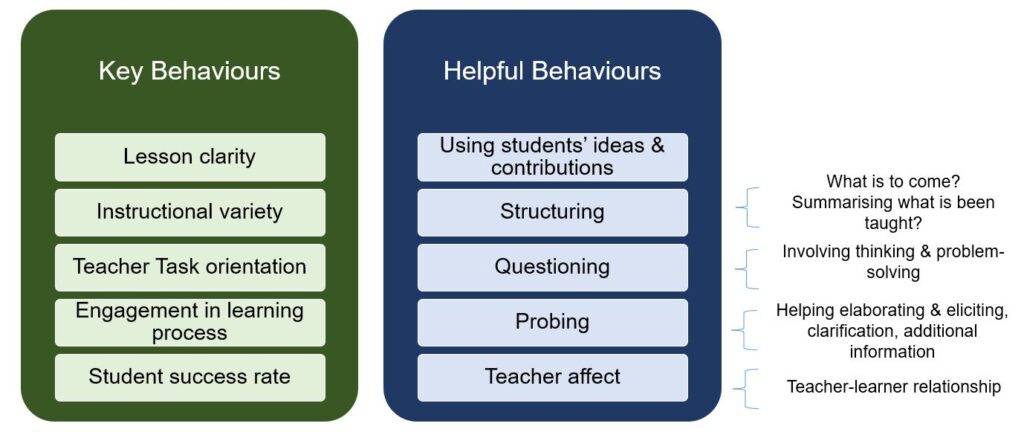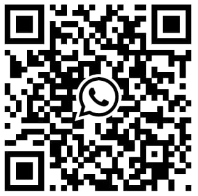Effective Teaching Methods - Gary Borich
Effective teaching aims to motivate and engage all students, recognizing that each student develops at a different pace with varying abilities. Instead of catering only to the average level, effective teachers accommodate the diverse needs of their students. They reject the notion that some students cannot be engaged and instead strive to ensure no student is left bored or struggling. Earlier definitions of effective teaching focused on being a role model, but later definitions shifted towards identifying the impact of teacher behaviour on students.
Gary Borich identified approximately 10 teacher behaviors that show promising relationships to desirable student performance, primarily as measured by classroom assessments and standardized tests.
The first five are called key behaviors, because they are considered essential for effective teaching. The second five are called helping behaviors, because they can be used in combinations to implement the key behaviors.

5 key behaviours related to Effective Teaching
Borich states that there are 5 key behaviours that make effective teachers:
1. Lesson clarity
Ideas should be clear to all learners at all levels. Ideas should be conveyed in a clear step-by-step order, they should be uncomplicated and with minimal distractions.
2. Instructional variety
The term instructional variety refers to your variability or flexibility of delivery during the presentation of a lesson. One of the most effective ways of creating variety during instruction is to ask questions. Another aspect of instructional variety in teaching is the most obvious: the use of supplemental learning materials, computer software, displays, the Internet, and space in your classroom.
For example, a teacher may:
- use attention -gaining devices (e.g., begins with a challenging question, visual, or example).
- show enthusiasm and animation through variation in eye contact, voice, and gestures (e.g., changes pitch and volume, moves about during the transition to a new activity).
- use wide variety of modes of presentation (e.g., asks questions, then provides for independent practice).
- use a mix of rewards and reinforcers (e.g., extra credit, verbal praise, independent study, etc.)
- use varied types of questions (e.g., divergent, convergent etc.)
3. Teacher task orientation
Teacher task orientation is a key behavior that refers to the amount of classroom time the teacher devotes to teaching an academic subject. The more time allocated to teaching a specific topic, the greater the opportunity students have to learn.
To maximize the time spent teaching, be sure to handle inevitable interruptions quickly, expedite the giving and collecting of materials and prevent or quickly put an end to distracting behavior.
4. Engagement in the learning process
Student engagement in the learning process, called engaged learning time, is a key behavior that refers to the amount of time students devote to learning in classroom.
Teacher should constantly monitor any seat work and group work, set rules for when students can leave class without disruption, keep a daily schedule to minimize confusion of students and give independent work that is interesting in order to engage students in the learning process.
5. Student success rate
The final key to effective teaching behavior is student success rate. The term student success rate refers to the rate at which students understand and correctly complete exercises and assignments.
A crucial aspect here is the level of difficulty of the material being presented. The level of difficulty is measured by the rate at which students understood and correctly answered questions on tests, exercises, and assignments.
The three levels of difficulty are as follows:
1. High success: The student understands the subject matter taught and makes only occasional careless errors.
2. Moderate success: The student has partial understanding but makes some substantive errors.
3. Low success: The student has little or no understanding of the subject matter.
In addition, the content should reflect prior learning, with easy to grasp steps for the new material.
5 helpful behaviours related to Effective Teaching
5 Helpful Behaviours that are closely related to the key Behaviours:
1. Using student ideas and contributions
Using student ideas and contributions is a behavior that includes acknowledging, modifying, applying, comparing, and summarizing student responses to promote the goals of a lesson and encourage student participation.
Use of student ideas and contributions also can increase a student’s engagement in the learning process and is frequently used catalyst for helping achieve that key behavior.
2. Structuring Lesson Content
Teacher comments made for the purpose of organizing what is to come or summarizing what has gone before are called structuring.
Used before an instructional activity or question, structuring assists learners in bridging the gap between what they are capable of doing on their own and what they are capable of doing with help from the teacher, thereby aiding their understanding and use of the material to be taught.
Used at the conclusion of an instructional activity or question, structuring reinforces learned content and places it in proper relation to other content already taught.
Both forms of structuring are related to student achievement and serve as effective catalysts for performing the five key behaviors.
3. Questioning
Questioning is another important helping behavior. A teacher, in a class, may use content questions or process questions, the difference of which is given below.
Content Questions
A content question is one that directly pertains to the material being taught and aims to assess a student’s comprehension or recall of specific information. These questions typically have a clear and predetermined correct answer, which is often conveyed explicitly in class lectures or assigned readings. Content questions leave little room for interpretation or alternative answers, as they focus on verifying the understanding of specific content.
Types of Content Questions
- Direct: The question requires no interpretation or alternative meanings. Example: What is the meaning of the word ancient in the story just read?
- Lower order: The question requires the recall only of readily available facts, as opposed to generalizations and inferences. Example: What was the mechanical breakthrough that gave the cotton gin superiority over all previous machines of its type?
- Convergent: Different data sources lead to the same answer. Example: What is one of the chemical elements in the air we breathe?
- Closed: The question has no possible alternative answers or interpretations. Example: What is the function of the central processing unit, or CPU, in a computer?
- Fact: The question requires the recall only of discrete pieces of well-accepted knowledge. Example: What is the result of dividing the number 47 by 6?
Process Questions
A process question is one that is asked with the intention of encouraging specific mental processes rather than simply eliciting factual information. These questions are designed to stimulate problem-solving abilities, guide thinking, spark curiosity, foster creativity, promote analysis and synthesis, and facilitate judgment. Unlike content questions, which focus solely on acquiring knowledge, process questions aim to achieve higher-order goals through engaging learners in active mental processes.
Types of Process Questions
- Indirect: The question has various possible interpretations and alternative meanings.
Example: What are some of the ways you have used the word ancient? - Higher order: The question requires more complex mental processes than simple recall of facts (e.g., making generalizations and inferences). Example: What were the effects of the invention of the cotton gin on attitudes in the North?
- Divergent: Different data sources will lead to different correct answers. Example: From what we know about the many forms of pollution today, what would be one of the first things we have to do to clean the air we breathe?
- Open: A single correct answer is not expected or even possible. Example: How have recent advances in computer technology influenced your life?
- Concept: The question requires the processes of abstraction, generalization, and inference. Example: Using examples of your own choosing, what are some of the ways division and subtraction are similar?
4. Probing
Another helping behavior is probing, which refers to teacher statements that encourage students to elaborate on an answer—either their own or another student’s. For example, draw more out of student responses by getting students to elaborate on their ideas (elicit clarification, solicit additional information, and redirecting the discussion). Help the student to discover the content rather than being explicitly told.
5. Teacher affect
Effective teachers provide a warm and encouraging classroom climate by letting students know help is available. Enthusiasm is an important aspect of a teacher’s affect. Enthusiasm is the teacher’s vigor, involvement, excitement, and interest during a classroom presentation, and willingness to share this emotion with learners, who will want to reciprocate. A proper level of enthusiasm involves a delicate balance of vocal inflection, gesturing, eye contact, and movement. In combination, these behaviors send to students a unified signal of vigor, involvement, and interest that conveys the message that you care.
UGC NET Previous Year Questions (Methods of Effective Teaching)
1.) The key behavior of an effective teacher is marked by which of the following features? (20 Nov Evening 2021)
a. Structuring
b. Teacher task orientation
c. Instructional Variety
d. Lesson clarity
e. Probing
Choose the correct answer from the options given below:
(A) a, b and c only
(B) a, c and d only
(C) b, c and d only
(D) c, d and e only
ANS. C
2.) For effective teaching which of the following is a key behaviour? (UGC NET 13th Nov 2020 Morning paper)
(A) Encouraging students to elaborate their own answer or that of other students.
(B) Summarizing what was told by a student.
(C) Teacher gives comments for the purpose of organizing what is to come.
(D) Making ideas clear to learners who may be at different level of understanding.
ANS. D
3.) From the list of the effective teaching behaviours, identify those which are called key behaviours.
(i) Direct, audible and oral delivery to all students.
(ii) Encouraging students to elaborate on an answer.
(iii) Warm and nurturing relationships with learners.
(iv) Varying modes of presentation.
(v) Preventing misbehaviour with a minimum of class disruption.
(vi) Organizing what is to come and summarizing what has gone before.
Select your answer from the options given below: (UGC NET 24th June 2019 Morning Paper)
(A) (i), (iv) and (v)
(B) (i), (ii) and (iii)
(C) (ii), (iii) and (iv)
(D) (iv), (v) and (vi)
ANS. A
4.) From the following, identify those characteristics which go within the category ‘helping behaviour’ for becoming an effective teacher: (UGC NET 4th Nov 2020 Morning paper)
A. Structuring
B. Student success rate
C. Using student ideas
D. Probing
E. Instructional variety
Choose the correct answer from the options given below:
(A) A, B and C only
(B) B, C and D only
(C) C, D and E only
(D) A, C and D only
ANS. D



